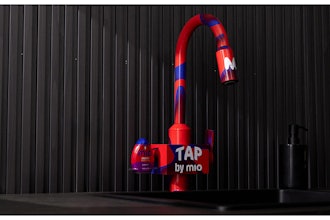
 Pervinder Johar
Pervinder Johar Effective supply chain management relies on everyone involved in the supply chain network providing timely, accurate and consistent information to identify issues and streamline the process. If supply chain managers want to transform their supply chains in 2019, they must work to drive information transparency, tracking of goods and optimization. As the supply chain becomes more fragmented, digital transformation and bringing stakeholders onto a common SCM platforms will provide significant benefits.
An effective supply chain depends on streamlining the movement and processing of goods. Without proper tracking, authenticating the sending, receiving and location of goods is a big challenge. This creates unnecessary delays and holdups, damaging upstream and downstream operations throughout the supply chain. Legacy supply chains are often opaque and difficult to understand. This makes it hard to track and plan for how goods are moving through the supply chain. Without transparency, optimization and effective demand management are almost impossible. This issue is heightened by fragmented, legacy software and systems that do not allow for the consistent capture, reporting and transferal of information.
Evolving SCM technology will provide the greatest opportunities for businesses to understand the supply chain, reduce their costs and increase the speed, quality and flow of goods. Supply chains need to be as fast as possible to meet the demands of modern consumers. A complex, legacy supply chain often relies on goodwill and established norms to work well. When these areas are challenged by increased demand or outside disruption, relationships can suffer, together with the quality and timeliness of supplying products. Small reductions in supply chain efficiency can have a significant overall impact on productivity and profitability. Without proper status updates and reporting, supply chains will waste effort, resources and time.
To effectively manage expectations and plans for the year ahead, supply chain managers should prepare for the following trends and plan accordingly.
Digital Culture as Competitive Advantage
Predictive analytics will become highly useful to optimize resources within the supply chain. In late 2018, Gartner identified eight strategic technology trends for the supply chain and how they can provide a competitive advantage. Combined with AI and machine learning, data is the driver for predictive capabilities — with it, future performance can be optimized based on historical results. This data is powerful and has the potential to positively impact every aspect of the supply chain, from sourcing and compliance to production and quality control. Embracing the value of technologies such as predictive analytics is essential for a strong foundation, upon which to build a digital supply chain.
Tariffs and Global Supply Chain Networks
The most agile and resilient supply chains are the ones that are going to be the most successful. Natural disasters, economic flux, and rising tariffs are going to remain a concern for the supply chain industry and therefore the C-suite may reconsider its current manufacturing strategies and its global operations. To help inform these decisions, companies should combine external and internal data. Predictive analytics uses historical data and machine learning to identify and anticipate certain outcomes that become increasingly valuable as the volume of data increases. When properly analyzed, this data is helpful for identifying patterns and areas for optimization, to fuel better planning and resource utilization.
AI’s Supply Chain Moment
AI and machine learning will become more integrated with every aspect of the supply chain. This integration will enable automating repetitive tasks and bringing intelligence to supply chain networks and systems. AI and machine learning are both required to get the most out of Natural Language Processing. The complexity of human language requires smart algorithms and self-teaching systems to parse and understand language input and provide appropriate responses and actions. NLP provides many benefits to the supply chain including understanding and mitigating potential risks with supply chain stakeholders, ensuring compliance, monitoring reputations of supply chain organizations, and reducing language barriers.
It’s clear that a responsive, real-time supply chain will be the key differentiator as 2019 progresses. Making digital supply chain investment decisions and introducing advanced technologies—including machine learning, AI, NLP, predictive analytics and more—that deliver end-to-end visibility and supply chain orchestration will power a responsive, revenue-generating supply chain. Using these technologies in a supply chain to orchestrate a real-time, connected network of trading partners will drive better efficiencies and new opportunities for years to come.
Pervinder Johar is CEO of Blume Global.























